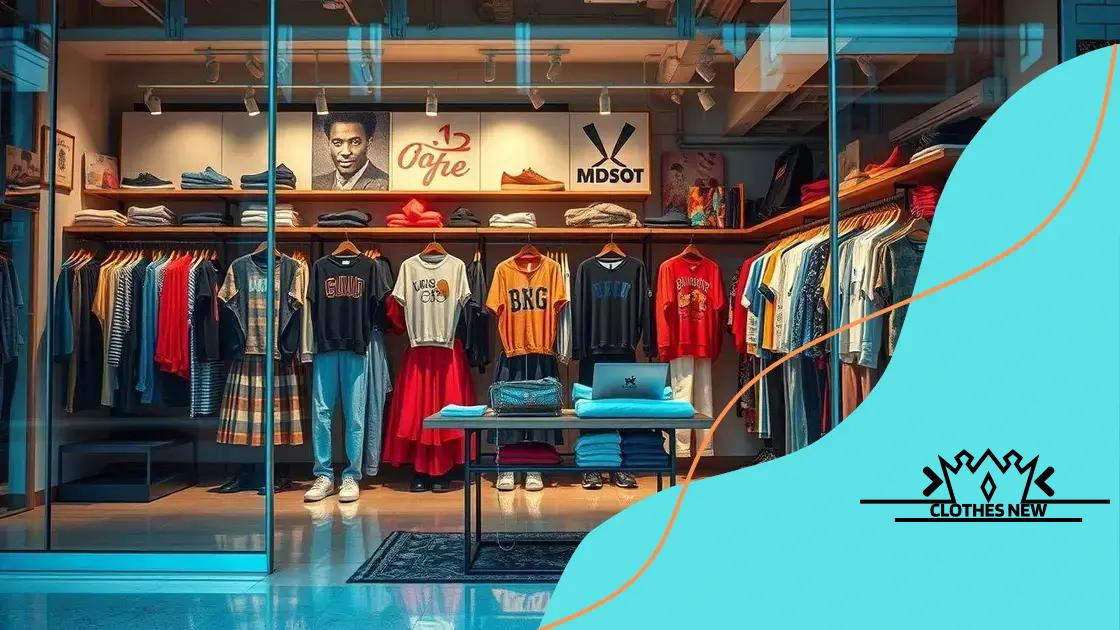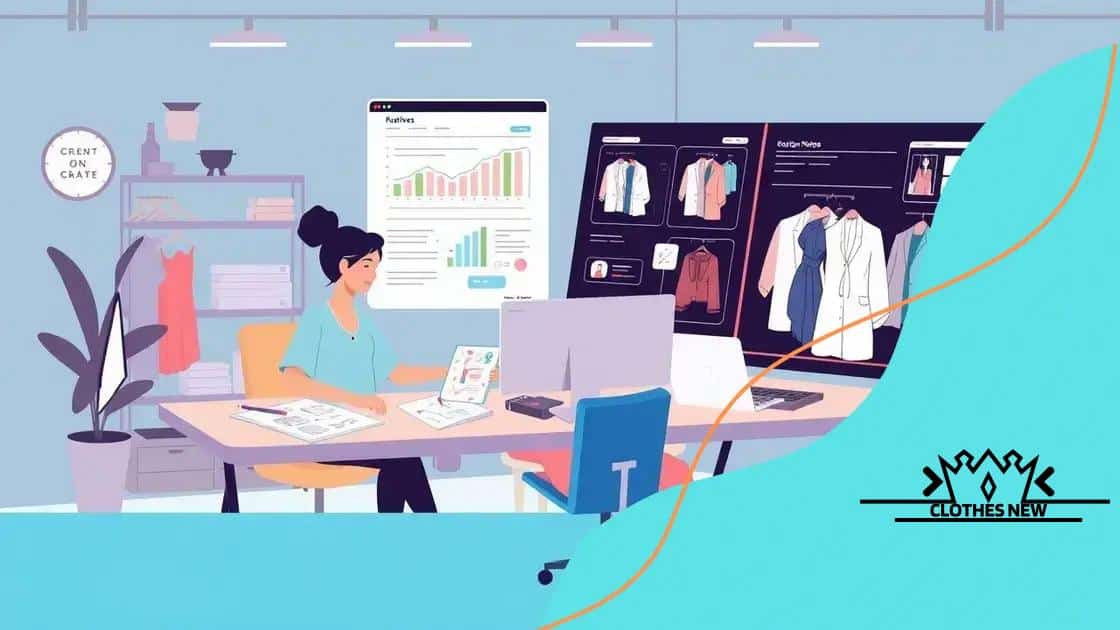How Shein makes high-fashion looks affordable

Shein makes high-fashion looks affordable by utilizing cost-effective materials and efficient production techniques, allowing rapid turnover of trendy items that appeal to a broad consumer base.
How Shein makes high-fashion looks affordable is a question many are asking. This online fashion retailer has taken the industry by storm, offering trendy styles at prices that make fashion accessible for all. Curious about their strategies? Let’s dive into what sets Shein apart!
Understanding Shein’s business model
Understanding Shein’s business model is essential to grasp how it successfully offers affordable high-fashion looks. With a unique approach that combines rapid production and keen market insights, Shein caters to modern consumers who crave trendy styles without the hefty price tag.
The heart of Shein’s success lies in its data-driven decision-making. By analyzing customer behavior and preferences, Shein quickly identifies emerging trends, allowing them to introduce new styles at lightning speed. This agility keeps their inventory fresh and appealing, similar to high-end fashion labels.
Key Strategies of Shein’s Business Model
Several strategies contribute to Shein’s effectiveness:
- Fast Fashion Cycle: Shein operates on a fast fashion model, rapidly designing and manufacturing clothing based on current trends.
- Direct-to-Consumer Sales: By selling directly through their website and app, Shein minimizes costs and offers competitive prices.
- Influencer Partnerships: Collaborating with social media influencers helps Shein reach wider audiences and build brand credibility.
- Global Reach: With a robust online presence, Shein caters to a global market, appealing to diverse fashion tastes.
Beyond these strategies, Shein’s effective use of social media platforms has revolutionized how they engage with customers. Their marketing campaigns often feature user-generated content, which fosters a sense of community among shoppers. This approach not only enhances brand loyalty but also encourages consumers to share their Shein outfits, boosting organic visibility.
Furthermore, Shein’s affordable pricing is made possible through efficient supply chain management and bulk manufacturing. This efficiency allows them to offer numerous styles at prices that appeal to budget-conscious shoppers. Unlike traditional retailers, Shein prioritizes quick turnarounds and leverages cost-effective materials without compromising style.
Overall, understanding Shein’s innovative business model reveals the intricate balance between affordability and style, which is key to its success in the competitive fashion industry. As the landscape of fashion continues to evolve, Shein exemplifies how adaptability and consumer focus can reshape the market.
The role of social media influencers
The role of social media influencers in the fashion industry, particularly for brands like Shein, cannot be overstated. These influencers bring trends to the forefront and create connections between the brand and consumers, making fashion more accessible and engaging.
By leveraging platforms such as Instagram and TikTok, Shein collaborates with influencers who showcase their products in real-life settings. This method helps potential customers envision how they would style the pieces, bridging the gap between online shopping and the tangible experience of wearing the clothing.
Benefits of Collaborating with Influencers
There are several advantages to the partnership between Shein and social media influencers:
- Increased Brand Awareness: Influencers have massive followings that can introduce Shein to new audiences quickly.
- Authentic Marketing: Collaborations feel more genuine than traditional advertisements, often leading to higher engagement.
- Consumer Trust: Followers tend to trust the recommendations of influencers, especially those they feel a connection with.
- Trend Setting: Influencers can help identify and promote emerging trends that Shein can capitalize on quickly.
This collaborative effort creates a unique marketing cycle. As influencers post photos and videos featuring Shein products, their followers are inspired to replicate similar looks. This process not only generates immediate sales but also fosters a sense of community among consumers who share their styles online.
Moreover, Shein often encourages user-generated content, where customers can show off their purchases. This further amplifies the brand’s reach as happy customers share their own influencer-like outfits, creating a continuous cycle of visual inspiration.
In this way, the role of social media influencers extends beyond mere promotion; they actively shape the fashion landscape, influencing which styles become popular and how brands like Shein engage with their audiences. As trends evolve, influencers will likely continue to play a pivotal role in guiding consumer preferences and brand narratives.
How Shein keeps up with fashion trends

How Shein keeps up with fashion trends is a critical aspect of its success in the competitive fashion landscape. The brand excels in identifying and responding to what is current and popular among consumers. This responsiveness is not just luck; it involves effective strategies that ensure Shein remains relevant and desirable.
One of the key methods Shein employs is the use of advanced data analytics. By monitoring consumer behaviors, purchasing trends, and social media activity, Shein can swiftly recognize which styles are gaining traction. This data-driven approach allows the company to adjust its designs and inventory almost in real-time.
Speed and Agility in Fashion
The speed at which Shein adapts is remarkable. Unlike traditional retail models, where fashion cycles take months, Shein can bring new items to market in a matter of weeks. This quick turnaround means that they can capitalize on fleeting trends before they fade away. Their efficient supply chain supports this fast-paced model, ensuring that popular styles are available while interest is high.
Shein also focuses on customer feedback as a vital source of information. By encouraging customers to leave reviews and share their experiences online, Shein gathers valuable insights about what styles resonate with its audience. This feedback loop not only helps improve products but also inspires future designs.
Collaboration with Designers and Influencers
Additionally, Shein collaborates with influencers and emerging designers to stay ahead of the trend curve. These partnerships enhance their ability to forecast trends and appeal to a younger demographic. By showcasing collections that reflect current styles, Shein taps into the influencer marketing ecosystem effectively.
Moreover, Shein’s engagement with its community through social media is pivotal. By following fashion-forward accounts and trends on platforms like Instagram and TikTok, they can spot emerging looks and styles that consumers are eager for. This connection keeps them imbedded in cultural conversations around fashion.
Overall, Shein’s ability to keep up with fashion trends showcases a mix of technology, consumer engagement, and market awareness. Through speed, data analysis, customer involvement, and strategic partnerships, Shein continually adapts to the dynamic world of fashion.
Affordable materials and production techniques
Affordable materials and production techniques are at the core of Shein’s ability to offer high-fashion styles at low prices. The brand utilizes a combination of innovative manufacturing processes and cost-effective materials to keep its products accessible without sacrificing style.
One of the primary strategies Shein employs is sourcing inexpensive fabrics that still meet consumer demands for comfort and style. These materials allow for a wide variety of trendy pieces while enabling Shein to maintain low production costs. Additionally, Shein frequently uses polyester and other synthetic fibers that are both durable and affordable.
Efficient Production Techniques
Shein’s production methods are also designed to maximize efficiency. By adopting a just-in-time production model, Shein minimizes waste and reduces inventory costs. This technique allows them to produce clothes quickly and respond to changing fashion trends.
Automation and Technology
Furthermore, Shein invests in automation and technology to streamline its manufacturing processes. Automated cutting machines and sewing technologies help speed up production times, allowing Shein to launch new styles rapidly. This technological advantage is crucial in the competitive fast-fashion market where speed is essential.
Shein’s supply chain management is another vital factor in their affordability. By maintaining close relationships with suppliers and manufacturers, they can negotiate better prices for materials and production services. These relationships help keep costs down, which directly benefits the consumer.
Additionally, Shein takes advantage of bulk purchasing. By ordering large quantities of materials and products, they can lower costs even further. This model not only increases their profit margins but also allows them to offer attractive prices to buyers.
Overall, Shein’s focus on affordable materials and streamlined production techniques enables them to offer the latest fashion trends at prices that appeal to a broad audience. With these strategies in place, they successfully blend affordability with style in today’s fast-paced fashion industry.
Evaluating Shein’s impact on the fashion industry
Evaluating Shein’s impact on the fashion industry reveals a complex landscape shaped by rapid changes and evolving consumer expectations. Shein has disrupted traditional fashion retail with its unique approach to affordability, speed, and trend responsiveness.
One significant impact of Shein is the normalization of fast fashion. The brand’s ability to produce fashionable items quickly and at low costs has changed consumer behavior. Shoppers now expect fresh styles to appear frequently, leading to shorter fashion cycles.
Social Media Influence
The influence of social media cannot be understated in assessing Shein’s effect on the industry. Social media platforms allow Shein to showcase new products instantly, engaging consumers and driving trends. This rapid dissemination of style inspires other brands to adapt by increasing their online marketing efforts.
Environmental Concerns
While Shein helps make fashion more accessible, it also raises important questions about sustainability. The fast fashion model, characterized by overproduction and waste, contributes to significant environmental challenges. Critics argue that the emphasis on cheap prices and quick trends undermines efforts to promote sustainable practices within the industry.
Many consumers are becoming more aware of the environmental implications of their shopping habits. As a result, Shein’s impact is pushing brands to consider more sustainable practices. Some companies are beginning to explore eco-friendly materials and slowing production times to address these concerns.
Fashion Accessibility
On the positive side, Shein enhances fashion accessibility. By providing trendy clothing at competitive prices, it allows a wider range of consumers to express their personal style. This democratization of fashion means that more people can engage with current trends without a hefty financial burden.
As Shein continues to evolve, its influence on the fashion industry will likely grow. Other brands may adopt similar strategies to remain competitive. But, balancing affordability and sustainability will be a crucial challenge for the industry moving forward.
FAQ – Frequently Asked Questions about Shein’s Impact on the Fashion Industry
How has Shein changed consumer expectations in fashion?
Shein has made trendy styles more accessible and has normalized the fast fashion model, leading consumers to expect quick turnover of new styles.
What are the environmental concerns related to Shein’s practices?
The fast fashion model raises issues of sustainability, as it often involves overproduction and waste, prompting calls for more eco-friendly practices.
How does Shein use social media to promote its brand?
Shein leverages social media platforms to showcase new products, engage consumers, and drive trends, creating a strong online presence.
What is the significance of affordability in Shein’s success?
By offering trendy clothing at low prices, Shein has democratized fashion, making it accessible to a broader audience.





